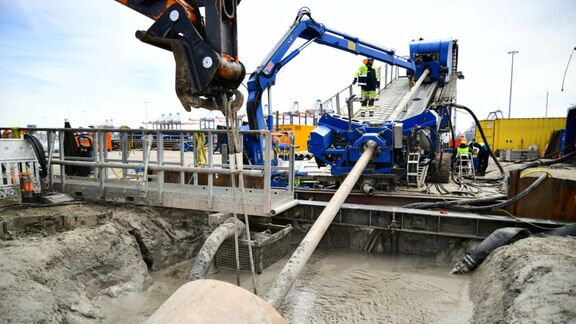Porthos kicks off: first drilling under seawall
Reading time: 2 minutes
After a period of preparation, there is now a noticeable start to construction of the infrastructure on the Porthos project for transportation and storage of CO2. Today, the first drilling took place. The drill made a hole under the seawall on the Maasvlakte.

Via a compressor station, Porthos will transport captured CO2 through the port of Rotterdam to a platform some 20 km off the coast. From this platform, CO2 will be permanently stored in empty gas fields 3 to 4 km under the North Sea bed. After that, CO2 will be arriving from the port area to the compressor station on the Maasvlakte. From this point, a pipeline runs to the platform out at sea. Today, a tunnel was drilled that runs under the seawall on the Maasvlakte.
Casing tube
For today’s drilling under the seawall, a drill with a diameter of over 300 mm was used. This drill dug under the seawall to just under the seabed. The casing tube for the CO2 pipeline is about 800 mm. To facilitate this, the tunnel will be widened to about 1050 mm. The casing tube, with an overall length of 600 metres, consists of 34 pipes that were welded together last month. The casing tube will be pushed down the drill hole from the landward side. The CO2 pipeline itself will be led through the casing tube sometime in 2025.
In the near future, work will continue on the CO2 pipeline at other locations in the port of Rotterdam as well. This subterranean tubing system will move captured CO2 from companies to the compressor station. The system will transect multiple waterways, train tracks and roads in the port area. Porthos will be operational in 2026.
Future CO2 storage projects
Porthos is a joint venture of EBN, Gasunie, and the Port of Rotterdam Authority. Porthos plans to store about 2.5 Mton per year for 15 years, totalling around 37 Mton. Thanks to Porthos, the Rotterdam port industry will soon be reducing its CO2 emissions by about 10%. The onshore compressor station and transportation system under construction will accommodate future CO2 storage projects.